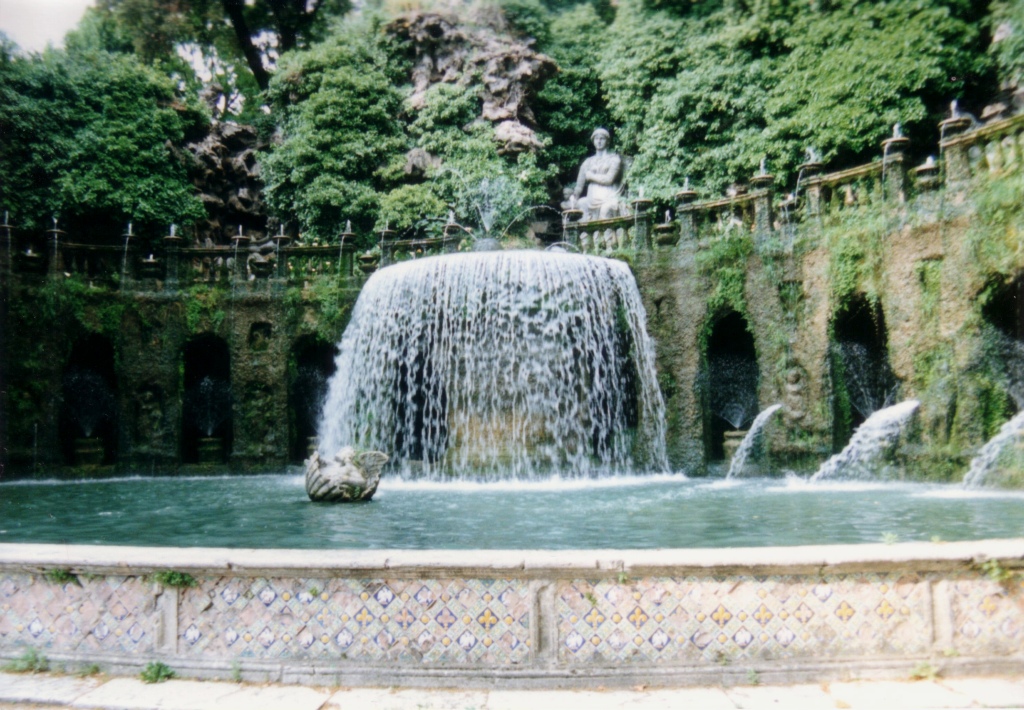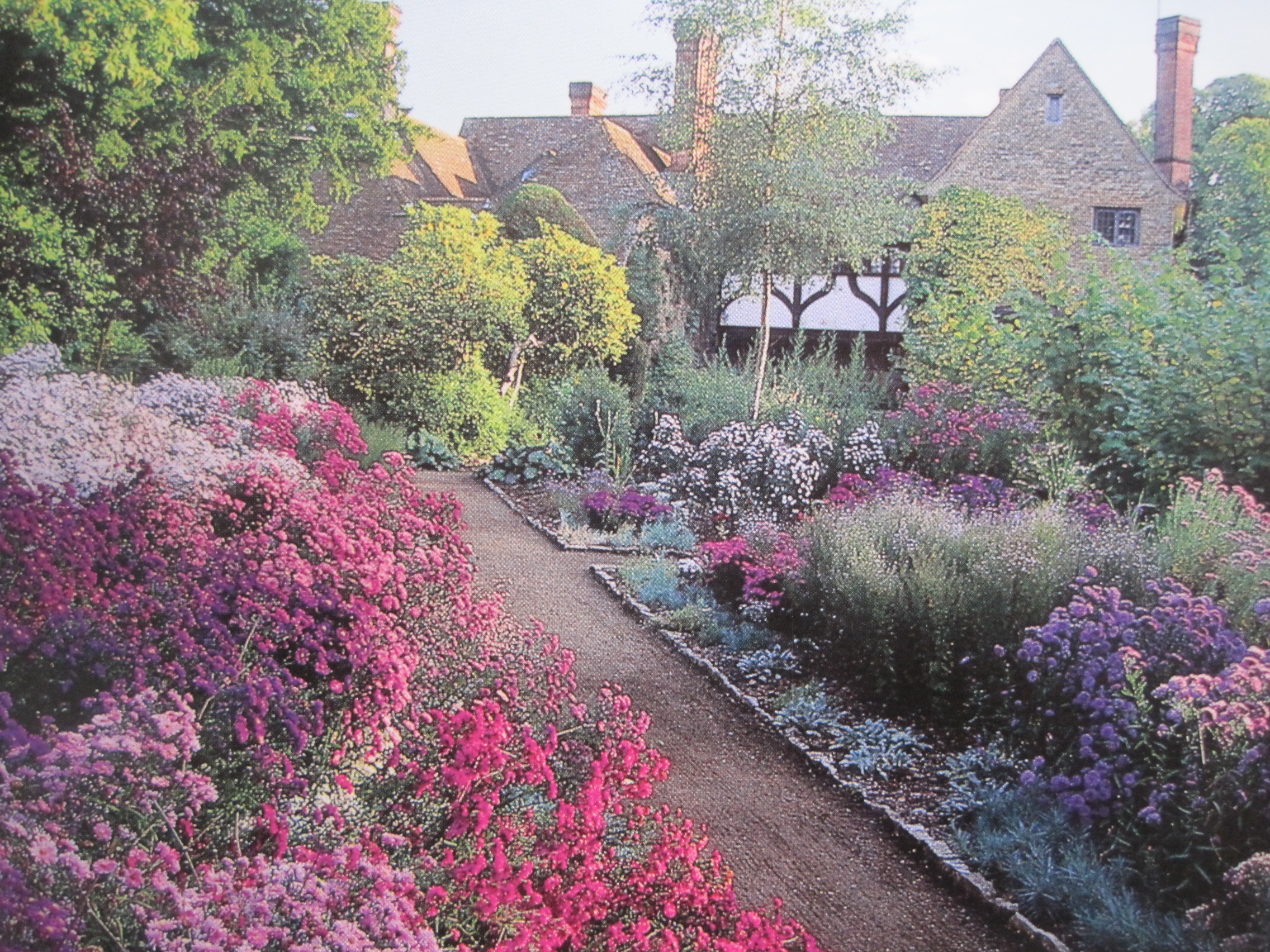My favorite expression of garden style is the Renaissance garden. I have always been fascinated with the Renaissance period, so learning about the style of the garden gave me a new dimension of knowledge about the Renaissance times. The way the garden evolved right alongside the art forms and sciences is fascinating.
The Renaissance was all about the new relationship between the human and divine with the top being God. God created man and nature and saw the world in terms of its usefulness. For example, plants and animals provided useful things like clothing, food, and medicine. At the same time, nature was part of the cosmos , and so to understand Nature was to understand God further. In the garden, art and nature were combined as a whole which made rise to the Renaissance garden.
This garden was formal and extravagant. Evolving from the medieval times, this garden was more expansive, worldly, and symmetrical, containing features such as fountains, statues, waterworks, and rare plants. I believe this is the most impressive garden style because it evolved immensely from the past, and so quickly. The medieval gardens that came before the Renaissance gardens were small, enclosed, and put where they could squeeze in space. However, in the Renaissance period, they were a form of art and expression of wealth. Along with being an expression of wealth, the Renaissance gardens were also used for relaxation and entertainment.
One of the main features of a Renaissance garden is a main axis, which is a line running down the center of the garden with symmetry on both sides. Another feature of a Renaissance garden is terracing. The terracing allowed an individual stand at the highest point (usually the back of the estate) and see the entirety of the garden ahead. As mentioned above, water features were an intrinsic part of Renaissance gardens and were large and very extravagant. They were also expensive to fuel and upkeep, so a large water feature showed wealth.
The quick and expansive evolution from the medieval garden to the renaissance garden, and the way the renaissance garden evolved alongside the art forms and sciences, are what makes the renaissance garden so fascinating to me
References:
http://www.gardenhistorymatters.com/2012/03/italian-renaissance-garden.html
http://www.egeskov.dk/en/renaissance-garden
https://forum.disabroad.org/bbcswebdav/pid-199209-dt-content-rid-608142_1/courses/garden_1502213/08%20SP%2015%20Italian%20Renaissance%20Garden%20-%20Villa%20d%27Este.pdf
http://fhswolvesden.wikispaces.com/file/view/renaissance_history_the-birth-of-venus.jpg/249086849/370x229/renaissance_history_the-birth-of-venus.jpg
http://upload.wikimedia.org/wikipedia/commons/7/74/Villa_d_Este1.jpg
http://www.poderesantapia.com/gardens/italianrenaissancegarden.htm
https://plus.google.com/102659917303976812530/posts/AeuqbmQ9wbz
Saturday, 16 May 2015
Saturday, 9 May 2015
Q: What was the form, contents, and character of the Arts and Crafts garden created by Gertrude Jekyll and Edwin Lutyens?
The Arts and Crafts movement flourished between the late 19th century to early 20th century, following the highly formalized Victorian Garden style. The Arts and Crafts era arouse from a debate about whether gardens should remain highly formalized, or develop a more informal style. The industrial revolution led to overproduction and loss of traditional craftsmanship. The Arts and Crafts garden aimed to bring back the traditional craftsmanship, while fusing the formal and informal styles. Gertrude Jekyll was one of the main forces behind the Arts and Crafts gardens. Joining forces with the renowned architect Sir Edwin Lutyens, Jekyll innovated the concept of the flow and design of the garden integrating seamlessly with the design of the home, creating an overall sense of complimentary artistic vision.The partnership of Jekyll and Lutyens created masterpieces that are still alive today.
Gertrude Jekyll (1843 - 1932) was England’s most renowned 20th century landscape designer, creating well over 400 gardens in the United Kingdom, Europe and America. Her gardens were known to have an effortless flare, with the highly calculated details as hidden as possible. For example, she perfected one of the main features in an Arts and Crafts garden, the herbaceous border. Jekyll's most famous herbaceous border was Munstead Wood, which is pictured below.
Jekyll used color theory to strategically plant each type and color of plant. She had to consider many different obstacles when planning such as flowering time, plant height, and plant color.
Jekyll and Lutyens gardens were geometrical, and filled with disciplined planting. Their gardens were often enclosed by hedges, vistas, pergolas, steps, and pools. The rills, arches, and quiet courts were all strategically filled with plants.They were the best at what they did and reflected the genius of the land as well as the character of the owners in their work.
Sources:
http://www.countrylifeimages.co.uk/ResizedImages/VeryLarge/884795.jpg
http://si.wsj.net/public/resources/images/EW-AS617_LUTYEN_P_20150113112515.jpg
https://c2.staticflickr.com/8/7196/6782550420_a81b715ec9.jpg
http://www.oldhouseweb.com/gardening/gertrude-jekyll-gardener-extraordinaire.shtml
http://thegallopinggardener.blogspot.dk/2011/01/great-garden-designers-gertrude-jekyll.html
http://www.gardenhistorymatters.com/2012/09/h-is-for-herbaceous-border.html
http://www.exploringsurreyspast.org.uk/themes/people/gardeners/gertrude_jekyll/
https://forum.disabroad.org/bbcswebdav/pid-202058-dt-content-rid-621743_1/courses/garden_1502213/19%2015%20SP%20Arts%20%26%20Crafts%20.pdf
Gertrude Jekyll (1843 - 1932) was England’s most renowned 20th century landscape designer, creating well over 400 gardens in the United Kingdom, Europe and America. Her gardens were known to have an effortless flare, with the highly calculated details as hidden as possible. For example, she perfected one of the main features in an Arts and Crafts garden, the herbaceous border. Jekyll's most famous herbaceous border was Munstead Wood, which is pictured below.
Jekyll used color theory to strategically plant each type and color of plant. She had to consider many different obstacles when planning such as flowering time, plant height, and plant color.
Jekyll and Lutyens gardens were geometrical, and filled with disciplined planting. Their gardens were often enclosed by hedges, vistas, pergolas, steps, and pools. The rills, arches, and quiet courts were all strategically filled with plants.They were the best at what they did and reflected the genius of the land as well as the character of the owners in their work.
Sources:
http://www.countrylifeimages.co.uk/ResizedImages/VeryLarge/884795.jpg
http://si.wsj.net/public/resources/images/EW-AS617_LUTYEN_P_20150113112515.jpg
https://c2.staticflickr.com/8/7196/6782550420_a81b715ec9.jpg
http://www.oldhouseweb.com/gardening/gertrude-jekyll-gardener-extraordinaire.shtml
http://thegallopinggardener.blogspot.dk/2011/01/great-garden-designers-gertrude-jekyll.html
http://www.gardenhistorymatters.com/2012/09/h-is-for-herbaceous-border.html
http://www.exploringsurreyspast.org.uk/themes/people/gardeners/gertrude_jekyll/
https://forum.disabroad.org/bbcswebdav/pid-202058-dt-content-rid-621743_1/courses/garden_1502213/19%2015%20SP%20Arts%20%26%20Crafts%20.pdf
Subscribe to:
Comments (Atom)





